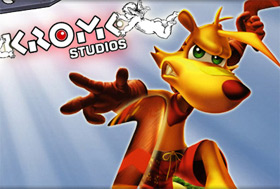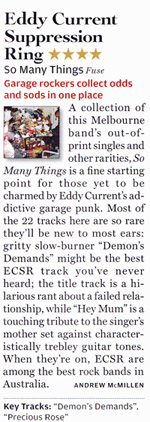My first feature for IGN Australia. Excerpt below.
 Krome Studios: Things Fall Apart
Krome Studios: Things Fall Apart
It’s the question that’s been reverberating around the corridors of the Australian game industry for three weeks: what causes Australia’s largest video game development studio to close its doors? Andrew McMillen investigates, and discovers that Krome’s current situation isn’t as clear-cut as first reported.
The Precursor
“Too often, game companies can fall into a production line mentality, and I think that hurts the morale of the employees who are naturally creative people – and in turn the creativity of the company, as a whole.” –Ex-Krome Employee
As the annual Game Connect Asia Pacific (GCAP) event drew to a close on Friday, October 15, the local games industry’s mood of inspiration, optimism and enthusiasm was given a brutal reality check via whisperings that Brisbane-based Krome Studios was shutting its doors. Word spread among the industry quickly, and reports began appearing on sites like Tsumea that the developer – established in 1999 – was conducting a round of staff lay-offs.
Such events were not unfamiliar to the Australian gaming industry, as the studio had been through regular rounds of employee redundancy in parallel to a decrease in development contracts. At its peak in July 2009, Krome employed over 400 staff across studios in Brisbane, Melbourne and Adelaide; four months later, 60 staff were let go, followed by another 50 in April 2010, and then an estimated 100 in August, which brought Krome Studios Adelaide to an end. The company was co-founded in 1999 by CEO Robert Walsh, creative director Steve Stamatiadis, and design director John Passfield, who left Krome in 2005.
Read the full story – which runs to three pages, and around 3,000 words – on IGN Australia.
This is the biggest story I’ve written, both in length and in terms of its scope. For three weeks, the Australian gaming industry had been assuming that Krome was dead. I looked closer, and found something different.
Thanks to the editors at IGN AU, Cam Shea and Narayan Pattison, for taking a chance on this story. As a sidenote, working with Cam on this story closed a nice little circle: as a teenager, I was a big fan of Hyper Magazine, which Cam edited between 2005 and 2007. Thanks also to the ex-Krome employees and gaming industry contacts I spoke with for this story, both on and off the record, as well as Krome CEO Robert Walsh.
16 November edit: IGN have also published my full interview with Robert Walsh. Read it here.
 A short album review, published in the December 2011 issue of Rolling Stone.
A short album review, published in the December 2011 issue of Rolling Stone.![]()

